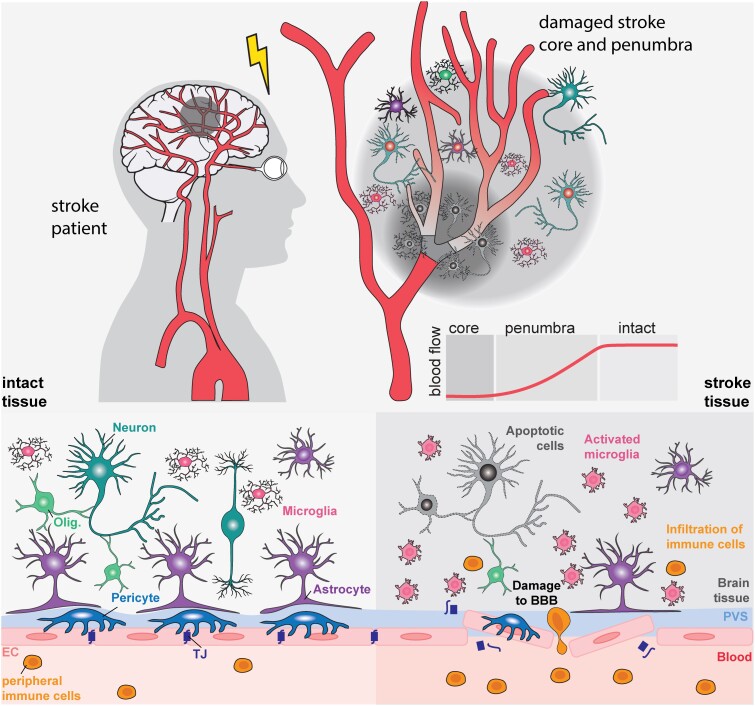Figure 1.
Pathophysiology of stroke. An ischaemic stroke usually occurs when a brain artery becomes blocked, leading to a reduction in oxygen and nutrients in the affected brain areas. These regions can be divided into: the stroke core, an area with severe cerebral blood flow reduction and irreversible necrotic cell death (<10 ml/100 g/min); the penumbra, an area with reversible damage (17–10 ml/100 g per min); and normal, intact tissue (>17 ml/100 g per min). Damage to stroke tissue includes necrotic and apoptotic cell death, damage to the blood–brain barrier, activation of resident microglia and infiltration of peripheral immune cells. EC = endothelial cell; olig = oligodendrocyte; TJ = tight junction.

